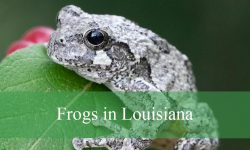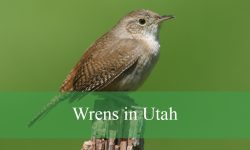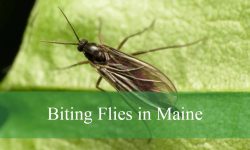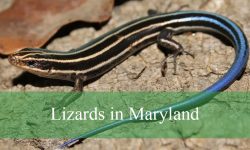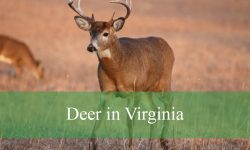Oregon’s diverse landscapes, from its rugged Pacific coastline to its inland valleys and mountainous forests, provide an excellent habitat for many bird species. Among them, crows stand out as some of the most intelligent and adaptable birds you can encounter. Known for their glossy black feathers, sharp calls, and remarkable problem-solving skills, crows are both fascinating and mysterious. They thrive in a wide range of environments, whether it’s the bustling city of Portland, the quiet farmlands of the Willamette Valley, or the remote coastal shores.
In this article, we will explore the three primary types of crows and crow-like birds found in Oregon. While they may appear similar at first glance, each species has unique traits, behaviors, and habitats that set them apart. By understanding these distinctions, birdwatchers and nature enthusiasts can better identify them and appreciate the role they play in Oregon’s ecosystems.
Let’s take a closer look at the American Crow, the Northwestern Crow, and the Common Raven, all of which make Oregon their home.
American Crow in Oregon
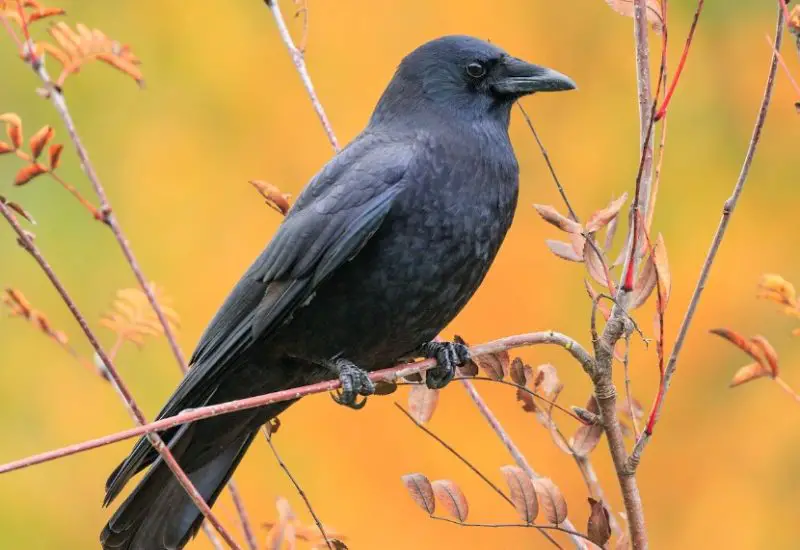
Physical Characteristics
The American Crow (Corvus brachyrhynchos) is the most common crow species in Oregon. It measures between 16 and 21 inches in length, with a wingspan of about 33 to 39 inches. Its body is entirely black, including feathers, legs, bill, and eyes, though under direct sunlight its feathers often reveal a purplish or greenish sheen. Compared to other corvids, the American Crow has a medium-sized bill that is strong and slightly curved. Its tail is fan-shaped when spread in flight, which helps distinguish it from the wedge-shaped tail of the raven.
Behavior and Social Habits
American Crows are highly social birds, often gathering in large flocks, especially during the winter months. They are known for their intelligence, frequently using tools, remembering human faces, and even passing information across generations. These birds communicate with a variety of caws, and some studies suggest that their calls contain complex meanings. In Oregon, American Crows can often be seen foraging in groups on farmland fields, picking through city garbage bins, or mobbing larger raptors like hawks and owls to defend themselves.
Habitat and Range in Oregon
This species is extremely adaptable and can be found throughout Oregon. From the eastern deserts near Bend to the lush forests of the Coast Range, American Crows thrive in diverse environments. They are particularly abundant in agricultural regions and urban centers, where food sources are plentiful. During the breeding season, they build nests high in trees, using sticks and lined with softer materials such as grass and feathers. Crows in Oregon are year-round residents, meaning they do not migrate but instead adjust their movements according to food availability.
Diet and Feeding
American Crows are omnivores, eating almost anything they can find. Their diet includes insects, small mammals, carrion, seeds, fruits, and even food scraps from humans. In coastal Oregon, they often feed on shellfish and other marine life washed up on shorelines. Their adaptability in diet is one of the key reasons for their success as a species. Farmers sometimes view them as pests because they feed on crops, yet they also play an important ecological role by cleaning up carrion and controlling insect populations.
Northwestern Crow in Oregon
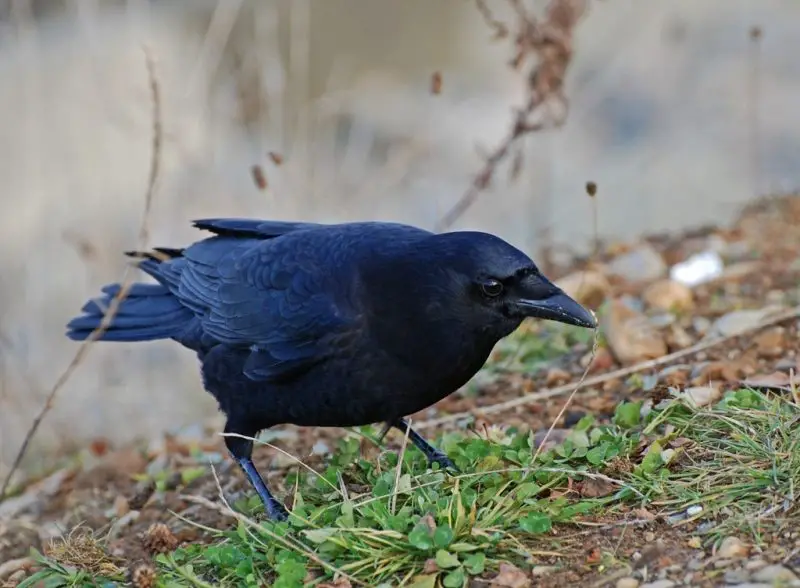
Identification Features
The Northwestern Crow (Corvus caurinus) is very similar in appearance to the American Crow, which often makes identification challenging. On average, the Northwestern Crow is slightly smaller, measuring about 15 to 17 inches in length with a wingspan of 32 to 36 inches. Its plumage is uniformly black, with a similar iridescent sheen under sunlight. The bill tends to be slimmer compared to that of the American Crow, though the difference is subtle. One of the most reliable ways to distinguish them is by their call, which is described as a more nasal and hoarser caw than that of their widespread cousin.
Habitat Along the Oregon Coast
The Northwestern Crow is primarily a coastal species, rarely venturing far inland. In Oregon, they are most frequently found along the northern and central coastlines, particularly in tidal flats, estuaries, and sandy beaches. Unlike the American Crow, which is comfortable in farmlands and cities, the Northwestern Crow has a strong association with marine environments. Birdwatchers often observe them foraging along the beach, scavenging fish remains, or cracking open shellfish against rocks.
Behavior and Adaptability
Despite their smaller range, Northwestern Crows share many of the same behavioral traits as American Crows. They are intelligent, opportunistic, and social, often seen in small flocks. These birds are especially skilled at exploiting coastal food sources. They may be seen dropping mussels or clams onto hard surfaces to break them open, a clever foraging behavior that highlights their problem-solving abilities. Their close association with marine environments has allowed them to thrive in coastal Oregon communities, though hybridization with American Crows in overlapping zones makes identification even more complex.
Feeding Habits
Northwestern Crows have a diet strongly tied to the coast. They consume crabs, mussels, clams, marine worms, and other intertidal organisms. In addition, they eat berries, insects, and food scraps from humans. On Oregon beaches, they can often be seen searching through seaweed piles or scavenging from fishing docks. Their diet flexibility ensures they can survive in the ever-changing coastal ecosystem, where tides and seasons determine food availability.
Common Raven in Oregon
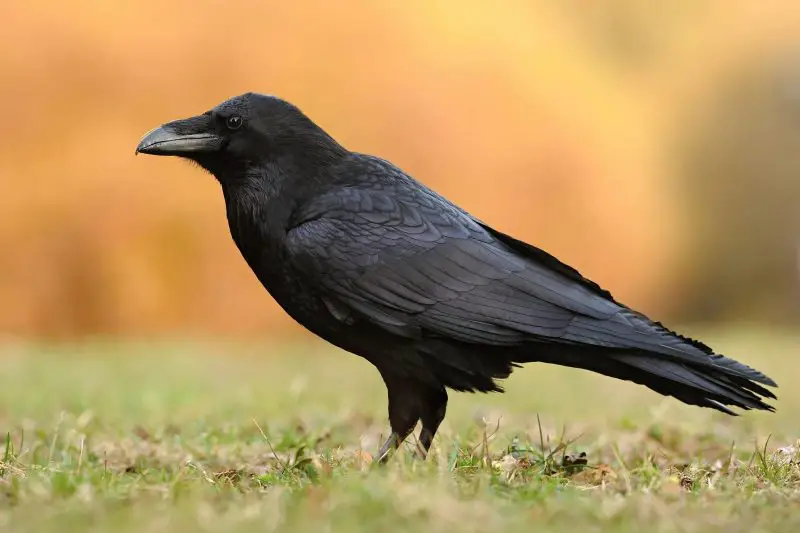
Size and Appearance
The Common Raven (Corvus corax) is not technically a crow, but it belongs to the same genus and is often mistaken for one due to its all-black appearance. Ravens are the largest members of the corvid family, measuring between 22 and 27 inches in length with a wingspan that can exceed four feet. Their bills are much larger and heavier than those of crows, giving their profile a distinctive look. One of the most useful identification features is their wedge-shaped tail, which contrasts with the rounded tail of the American Crow. In flight, their wingbeats are slower and deeper, adding to the impression of a much larger bird.
Habitat Diversity in Oregon
Ravens are widespread across Oregon, occupying habitats ranging from the remote deserts of the east to the high mountain forests of the Cascades. They prefer wilder areas compared to the more urban-friendly American Crow, though they can occasionally be seen near human settlements, especially where food is accessible. In the eastern high desert near towns like Burns, ravens are a common sight soaring overhead. In forested areas, they often nest on cliff ledges or tall trees, where they have a good vantage point to watch for food.
Behavior and Intelligence
The Common Raven is renowned for its problem-solving skills and playful behavior. Ravens have been observed using sticks as tools, playing aerial games, and even mimicking human speech. They are generally less social than crows, often seen in pairs rather than large flocks, although they may gather at carcasses or abundant food sources. Their vocalizations are highly varied, with deep croaking calls, gurgling notes, and even sounds that resemble knocking or dripping water. In Oregon’s wilderness, hearing a raven’s croak echo through a canyon is an unforgettable experience.
Diet and Ecological Role
Ravens are omnivorous like crows, but they lean more heavily on carrion and large animal remains. They feed on roadkill, deer carcasses, and livestock remains, making them important scavengers in Oregon’s ecosystems. They also eat small mammals, birds, reptiles, berries, grains, and insects. Along with crows, ravens play a crucial ecological role by recycling nutrients back into the environment. However, in some rural parts of Oregon, they are considered a nuisance because they occasionally prey on the eggs and young of ground-nesting birds or livestock afterbirth.
Comparison of Crows in Oregon
Feature |
American Crow (Corvus brachyrhynchos) |
Northwestern Crow (Corvus caurinus) |
Common Raven (Corvus corax) |
|---|---|---|---|
Size |
16–21 in length; wingspan 33–39 in |
15–17 in length; wingspan 32–36 in |
22–27 in length; wingspan 45–52 in |
Tail Shape |
Fan-shaped |
Fan-shaped |
Wedge-shaped |
Bill |
Medium, slightly curved |
Slimmer and smaller |
Large, heavy, more curved |
Call |
Loud “caw, caw” |
Nasal, hoarse “caw” |
Deep croaks, varied vocalizations |
Habitat in Oregon |
Cities, farmlands, forests, valleys |
Coastal areas, beaches, estuaries |
Mountains, deserts, forests, cliffs |
Behavior |
Highly social, forms large winter roosts |
Coastal foraging, cracks shellfish |
Often in pairs, aerial play, intelligent |
Diet |
Omnivore: insects, carrion, seeds, crops, human food |
Marine-based diet: crabs, mussels, clams, plus berries and scraps |
Omnivore leaning on carrion: mammals, birds, berries, insects |
Range in Oregon |
Statewide, very common |
Primarily along the coast |
Widespread in wilderness, mountains, and deserts |
Best Time and Places to See Crows in Oregon
Oregon offers birdwatchers excellent opportunities to observe crows throughout the year. American Crows are the easiest to spot, especially in urban areas like Portland, Eugene, and Salem. Parks, neighborhoods, and agricultural fields provide consistent sightings. Large roosts are especially visible in winter, when thousands of crows gather together at dusk, filling the sky with their calls.
For those seeking Northwestern Crows, the Oregon coast is the prime destination. From Astoria to Newport, these coastal birds frequent beaches, tidepools, and fishing docks. Early morning low tides are ideal for spotting them as they forage for shellfish and other marine food. Their nasal calls are a reliable clue when distinguishing them from American Crows in overlapping areas.
The Common Raven is best observed in wilder regions, particularly in eastern Oregon’s desert landscapes and the Cascade mountains. Hiking trails, remote cliffs, and open valleys provide excellent vantage points to watch ravens soaring overhead. They are also common in Crater Lake National Park and the high desert areas near Steens Mountain.
FAQs about Crows in Oregon
Are crows protected in Oregon?
Yes, crows are protected under the Migratory Bird Treaty Act, which makes it illegal to harm or kill them without special permits.
Can you hunt crows in Oregon?
Crows are considered game birds in Oregon, and regulated hunting seasons exist. However, hunters must follow state regulations and federal laws when hunting crows.
Do crows migrate in Oregon?
Most American and Northwestern Crows in Oregon are year-round residents. They may shift locations slightly depending on food availability, but they do not migrate long distances.
How can you tell the difference between a crow and a raven?
Ravens are much larger, have wedge-shaped tails, and produce deeper croaking calls, while crows are smaller, with fan-shaped tails and higher-pitched caws.
Are Northwestern Crows still considered a separate species?
In recent years, scientists have debated whether the Northwestern Crow should be considered a distinct species or a coastal population of the American Crow. Hybridization between the two is common in areas where their ranges overlap, including parts of Oregon.
Conclusion
Oregon is home to a fascinating trio of crow species and their close relatives: the American Crow, the Northwestern Crow, and the Common Raven. Each of these birds demonstrates remarkable adaptability, intelligence, and survival skills, making them among the most intriguing birds in the Pacific Northwest. From city streets to coastal beaches and remote mountain ranges, crows and ravens contribute to the state’s biodiversity and serve as vital members of their ecosystems.
For birdwatchers, learning to identify these species enhances every encounter, whether you’re listening to a chorus of caws echoing through a city park or watching a raven soar over a desert canyon. By appreciating their role in nature, we gain a deeper respect for these black-feathered birds that continue to thrive in Oregon’s diverse landscapes.

